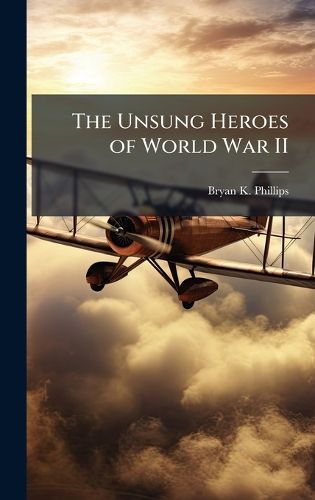Readings Newsletter
Become a Readings Member to make your shopping experience even easier.
Sign in or sign up for free!
You’re not far away from qualifying for FREE standard shipping within Australia
You’ve qualified for FREE standard shipping within Australia
The cart is loading…






The Army Air Force's (AAF) critical role in World War II is celebrated and studied over and over again through best-selling books, award-winning movies and highly-accredited learning institutions around the United States. There are truly some amazing stories of heroism about AAF fighter and bomber pilots and the men who commanded those types of units. In fact, it is rare to hear about anything but great pilots and great leaders on the subject of the AAF in World War II. One great AAF leader, H.H. Arnold, understood that it takes a lot more than airplane pilots and great leadership to achieve air superiority. He said, "An Air Force is a balanced compound of three essential ingredients, airplanes, combat and maintenance crews, and air bases."1 The intent of this paper is to explore a little deeper into why the AAF was successful in achieving air superiority in World War II. Specifically, the goal of this paper is to highlight the numerous experiences and contributions of some of the AAF's unsung heroes, the motivated and dedicated AAF mechanics that made the airplanes ready for flight.
This work has been selected by scholars as being culturally important, and is part of the knowledge base of civilization as we know it. This work was reproduced from the original artifact, and remains as true to the original work as possible. Therefore, you will see the original copyright references, library stamps (as most of these works have been housed in our most important libraries around the world), and other notations in the work.
This work is in the public domain in the United States of America, and possibly other nations. Within the United States, you may freely copy and distribute this work, as no entity (individual or corporate) has a copyright on the body of the work.
As a reproduction of a historical artifact, this work may contain missing or blurred pages, poor pictures, errant marks, etc. Scholars believe, and we concur, that this work is important enough to be preserved, reproduced, and made generally available to the public. We appreciate your support of the preservation process, and thank you for being an important part of keeping this knowledge alive and relevant.
$9.00 standard shipping within Australia
FREE standard shipping within Australia for orders over $100.00
Express & International shipping calculated at checkout
Stock availability can be subject to change without notice. We recommend calling the shop or contacting our online team to check availability of low stock items. Please see our Shopping Online page for more details.
The Army Air Force's (AAF) critical role in World War II is celebrated and studied over and over again through best-selling books, award-winning movies and highly-accredited learning institutions around the United States. There are truly some amazing stories of heroism about AAF fighter and bomber pilots and the men who commanded those types of units. In fact, it is rare to hear about anything but great pilots and great leaders on the subject of the AAF in World War II. One great AAF leader, H.H. Arnold, understood that it takes a lot more than airplane pilots and great leadership to achieve air superiority. He said, "An Air Force is a balanced compound of three essential ingredients, airplanes, combat and maintenance crews, and air bases."1 The intent of this paper is to explore a little deeper into why the AAF was successful in achieving air superiority in World War II. Specifically, the goal of this paper is to highlight the numerous experiences and contributions of some of the AAF's unsung heroes, the motivated and dedicated AAF mechanics that made the airplanes ready for flight.
This work has been selected by scholars as being culturally important, and is part of the knowledge base of civilization as we know it. This work was reproduced from the original artifact, and remains as true to the original work as possible. Therefore, you will see the original copyright references, library stamps (as most of these works have been housed in our most important libraries around the world), and other notations in the work.
This work is in the public domain in the United States of America, and possibly other nations. Within the United States, you may freely copy and distribute this work, as no entity (individual or corporate) has a copyright on the body of the work.
As a reproduction of a historical artifact, this work may contain missing or blurred pages, poor pictures, errant marks, etc. Scholars believe, and we concur, that this work is important enough to be preserved, reproduced, and made generally available to the public. We appreciate your support of the preservation process, and thank you for being an important part of keeping this knowledge alive and relevant.